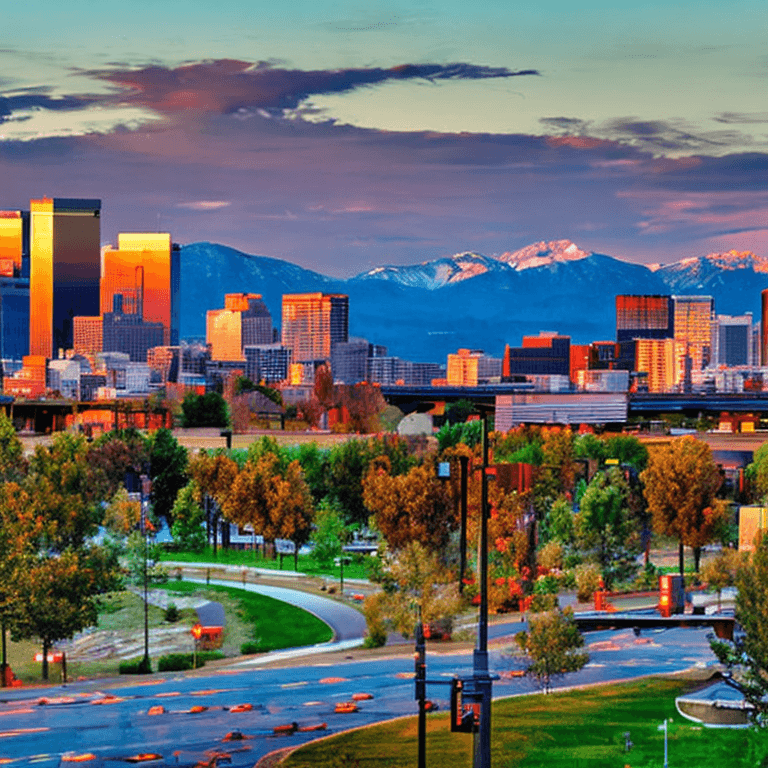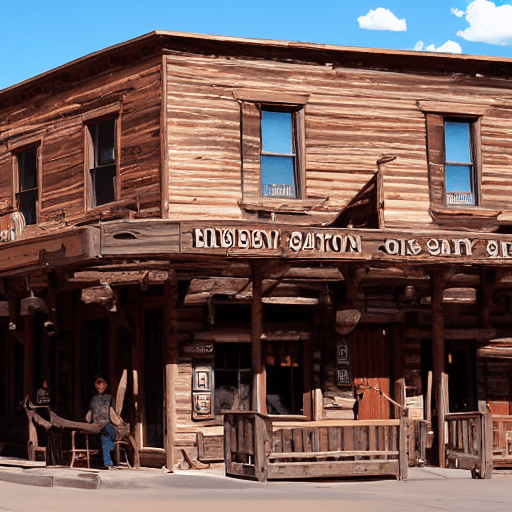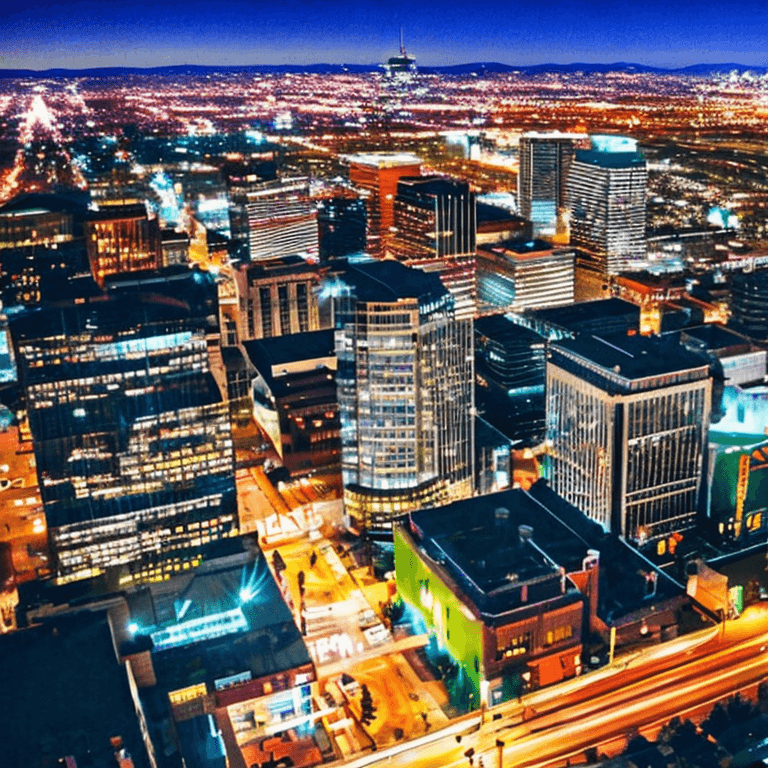The History of Denver
Denver's history is filled with individuals and events that have created the city. From the gold rush to the revival of Denver following the oil spill.
Early Denver was a place of crossroads for people who travelled between the Great Plains and Rocky Mountains. Evidence from archaeology at ancient indigenous sites suggests that people from different cultures interacted and interacted here.
Gold Rush
The Gold Rush of 1849, or the first gold boom in Denver was a significant moment in the city's history. It brought many people to the city who were looking for fortune or a fresh start in life.
The first gold discoveries were made in Gilpin and Clear Creek Counties, west of Denver. Numerous prospectors struck gold in the area, such as George Jackson in Idaho Springs and John Gregory in Cherry Creek.
These discoveries did not suffice to reenergize gold rush. To attract new miners, it took a lot publicity. Promoters such as William N. Byers, editor of Denver's first newspaper known as the Rocky Mountain News, started campaigns to attract gold seekers.
Over 100,000 men had left their homes in Kansas and Nebraska to cross the plains to Colorado's mountain region by spring 1859. They were referred to as "Fifty-Niners."
Some were looking for gold in gulches, such as Clear Creek or Gold Run in Boulder County. Others were more determined and sought out the gold that was buried in Colorado's mountains.
John Gregory, a Georgian was the first major gold discovery in the area around Central City. He was a red-haired, wiry cracker who had keen eyes for gold in his home country.
A number of other prospectors followed Gregory's lead and made gold strikes in the Clear Creek and Gold Run area. Prospectors who continued their search in the mountains were rewarded with the discovery of rich gold from the placer.
As a result of the gold rush, Colorado developed into a mining mecca as well as a railroad-based city. The city grew rapidly and was declared the capital of the Colorado Territory in 1881. Today, Denver is a vibrant city with numerous parks, museums, and other attractions that pay tribute to its rich history.
Silver Rush
In the 19th century, Colorado's main economic engine was gold and silver mining. It generated more than $1 billion in revenue and produced many millionaires early such as Horace Tabor and Nathaniel Hill.
In 1849, a group California prospectors set out west to find their fortune. They discovered some gold near Arvada and then discovered placer gold (veins embedded in rock) at Cherry Creek. These discoveries were teasers, however they piqued the curiosity of a few Midwestern and Eastern investors who quickly jumped aboard and started to explore the area further.
Tens of thousands of men left for northeastern Colorado as word spread. They were driven by a variety of reasons, including wanting a new start or having been involved in the tensions between North-South.
Some were enticed by the prospect of wealth by reading promotional literature like Horace Greeley’s "Go West Young Man." These men were also driven by an unending desire for adventure.
Whatever the reason for why they were attracted to the wilderness of Colorado, the majority of them were fortunate to find their fortune in the silver and gold mining. The discovery of silver in the 1850s, combined with the Bland-Allison Act of 1878, which required Congress to purchase 4.5 million ounces of silver per month, increased the value of the metal dramatically and allowed for the development of additional mines throughout the state.
Following the silver boom, however the economy plummeted and many mining districts struggled to survive. Durango and Ouray, in southwest Colorado continued to be strong, while others, like Creede or Silverton in the San Juan Mountains, floundered.
Culture Rush
Denver is a cultural hub. The city boasts some of the largest art institutions in the United States and is home to world-class museums that celebrate the past and present.
Denver Art Museum is a great place to visit, with collections that span from prehistory to the 21st century. It is also located across the street from the Clyfford Museum, which houses the largest collection of American abstract expressionist art.
Denver transformed itself from a frontier town to an urban, prosperous city as the culture craze continued. This transformation was enabled by a new train line that connected Denver with other cities and towns throughout the country.
This new route also resulted in more revenue for the city, which led to an increase in population growth. Denver was the third-largest city in the United States at the start of World War II, with an estimated population of 322,000.
Another reason for the development of Denver was the development of the US Mint, which was built in the city in 1878. The mint is now a popular tourist destination, and tours are offered daily.
A visit to the Molly Brown House, which was the residence of Denver's first female mayor, is also an absolute must. The restored Victorian-style home provides a glimpse into the lives of its residents and is a fascinating glimpse into the history of Colorado.
While the Gold Rush helped Denver to establish its name but it wasn't without its problems. Many who left their homes in eastern America to search for the riches of the west weren't well-prepared for their journey. They frequently traveled in wagons and were susceptible to dehydration, hunger, and even death. These circumstances led to a the spread of fear and xenophobia which led to the creation of the Ku Klux Klan.
Oil Boom
The oil boom of 1849 was the catalyst that brought Denver City into a new age. It was a time in which people traveled from around the nation to work in the oil fields. The boom created a huge demand for homes, restaurants and hotels and water systems to accommodate the growing number of workers in western Colorado.
A number of towns were created in the area to accommodate workers and visitors. Some towns were small, with little shops and restaurants, while others had large oil towns with hotels, restaurants, and recreation facilities.
Gearhart was among the most famous, and was situated about half a mile from the Patterson well. There were a variety of businesses in the town, such as general shops and a supermarket, a bar/pool hall, machine shops, and other services.
Workers from other areas loved the town as it was affordable and easy to reach. It also had a dance pavilion that allowed guests and laborers to dance.
While the boom was a positive time for some, it also brought a lot of difficulties to Denver and the surrounding communities. Certain towns and families would lose their homes while others would become bankrupt or find it difficult to make ends meets.
In addition, many towns were faced with an unsatisfactory supply of workers as people from other areas of the country were attracted by the high wages and opportunities for employment in western Colorado. People who didn't work in the mines required accommodation, improve wooden water lines to accommodate more flow, and provide meals in restaurants crowded with newly arrived workers and tourists.
Today, the Denver-Julesburg Basin is one of the largest oil shale plays in the world. While the oil industry in the state is an important component of the economy, it is not the only one. Companies are focusing their efforts on other industries such as finance and cleantech, to drive economic growth, while oil and gas production is not expected to increase as fast as it did when the law was first passed.
Boom and bust cycle
The boom and bust cycle is a cycle of economic growth and decline that occurs frequently in the modern capitalist economy. When there is an economic boom, the economy grows as jobs are plentiful and investors earn high returns on their investments. The boom ends and the economy shrinks. People lose their jobs and investors lose their capital.
During the boom, the central bank makes it easier for individuals and businesses to get loans by lending it at low interest rates. They can then invest the money in companies, technology stocks or houses and expect an increase in the value of their investment.
Related: Denver Car Accident Attorney
As the economy begins to slow down, businesses begin to reduce their spending, and employees begin to lose their jobs. In the midst of the recession business owners begin to sell off their assets, including their houses and stock portfolios, in order to raise money to pay their employees.
Colorado's history has been marked by boom-and-bust cycles, from the gold rush of 1849 through the Panic of 1893. But Colorado's economy has changed and is no longer reliant on mining as much.
In the 1980s the energy boom transformed Denver into a city with tall skyscrapers. The "Mile High City" was given to the city.
But the frenzied construction industry proved to be one of the most significant destabilizers of Denver's economy. During the energy boom developers constructed a variety of projects because they had enough money.
This trend is now resurfacing in the current real estate boom, especially in the Front Range. It's possible that Colorado's economy will slip back into the boom-and-bust cycle.
Denver, Colorado Car Accident Resources:


